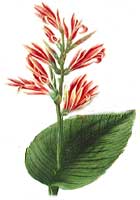After calling in the directions in Italian, Annabella showed us how to make lavender wands. She offered us lavender tea from both fresh and dry plants and lavender madelines....yum!
Lavender is one of those herbs that has many uses. If you lived on a desert island and could only have one herb, lavender should be your choice. It has both medicinal and culinary uses. Of all scents, lavender is the most popular. Most people like it.
Anti-bacterial, anti-spasmodic, slightly sedative, antiseptic and anti-inflammatory. I use it almost everyday. It helps with burns, poison oak, and insect bites. This is interesting because bees love the flowers and yet lavender oil can soothe bee stings. I make a spray called 'burns and bites' using lavender oil.
Anti-bacterial, anti-spasmodic, slightly sedative, antiseptic and anti-inflammatory. I use it almost everyday. It helps with burns, poison oak, and insect bites. This is interesting because bees love the flowers and yet lavender oil can soothe bee stings. I make a spray called 'burns and bites' using lavender oil.
According to Wikipedia, "Lavender was commonly used in Roman baths to scent the water, and it was thought to restore the skin. Its late Latin name was lavandārius, from lavanda (things to be washed), from the verb lavāre (to wash). When the Roman Empire conquered southern Britain, the Romans introduced lavender. The Greeks discovered early on that lavender if crushed and treated correctly would release a relaxing fume when burned."
There are many varieties of lavender which have different properties and they all have a slightly different scent.
The guided visualization we participated in took me to a cave near the ocean. While in the cave, the spirit of lavender spoke to me and reminded me that the most potent lavender plants are those grown in harsh environments with little water. The less water, the better the oil. Lavender is here to remind us that the challenges of life can bring out either the best or the worst within us. Like lavender oil, let us bring out our healing essence!
I have grown lavender both from seed and from cuttings, although growing from seed is very slow.
Here are some recipes using culinary lavender:
2 ½ cups of water
¼ C culinary lavender
¼ C culinary lavender
1 can frozen lemonade concentrate
Sugar to taste
Bring water and lavender to boil over medium heat. Turn off heat and let stand for 20 minutes. Strain the mixture. Pour into lemonade. Add sugar to taste.
with Garlic and Lemon
Makes 6 Servings
1 pound medium beets, with 1 inch of stems remaining
6 unpeeled garlic cloves
¼ cup plus 1 Tbs. extra-virgin olive oil1 Tbs. plus ½ tsp. dried culinary ‘Provence’ lavender buds, finely ground in a spice grinder
¼ tsp. finely grated lemon zest
2 Tbs. fresh lemon juice
Sea salt and freshly ground black pepper
¼ cup Italian parsley leaves chopped
Preheat oven to 375º F.
Place the beets and garlic on a large sheet of foil and sprinkle with ¼ cup of the oil and 1 Tbs. of the lavender; toss to combine. Fold up the foil to make a sealed packet. Place on a baking sheet. Roast for 30 to 45 minutes, or until tender when tested with a sharp knife. Set aside until cool enough to handle. Slip off the skins.
Cut the beets into quarters and place in a large skillet. Squeeze the garlic over the beets. Stir in the lemon zest, lemon juice, the remaining 1 Tbs. oil, and the remaining ½ tsp. lavender. Season with salt and pepper. Warm through over medium heat. Sprinkle with the parsley.
Serve hot or warm.
And here's my recipe for a healing spray:
1 oz. aloe vera gel
1 oz. lavender hydrosol
1 oz. roman chamomile hydrosol
30 drops of lavender essential oil
15 drops of ravensara essential oil
Combine all ingredients in a 4 oz. spray bottle.
Keep out of eyes.
Alleviates pain.
Promotes skin healing.
Diminishes itching.
The best lavender essential oil comes from Young Living. Visit my new young living website to order some. They have many other products using Lavender. Check them out.









